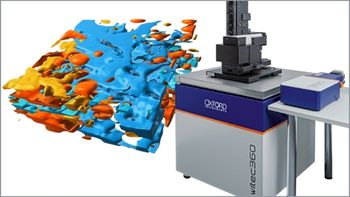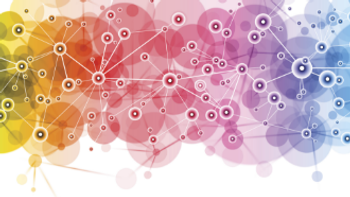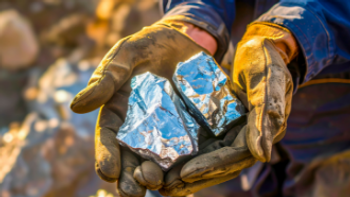
Virtual Conference: Molecular Spectroscopy in Practice: Raman and IR Imaging Theory and Applications
Virtual Conference: Molecular Spectroscopy in Practice: Raman and IR Imaging Theory and Applications
Register Free:
Tuesday, July 27, 2021
Day 1, Session 1: 9:00am – 12:00pm EDT
Molecular Spectroscopy Imaging: Techniques and Technologies
9:00am EDT Reverse Engineering Industrial Materials with FT-IR Imaging
Peter Larkin, Solvay Research & Innovation
Chemical imaging provides simultaneous measurement of the spatial and spectroscopic (physical and chemical) information that enables reverse engineering of complex systems. The high chemical specificity of mid-infrared (IR) spectroscopy make Fourier transform IR (FT-IR) imaging an invaluable technique for the analytical characterization of a wide variety of systems in biology, polymers, and material sciences. Extensive and powerful digital IR spectral library searches enable rapid identification of molecular structures. For this reason, FT-IR imaging has become an indispensable technique in the analytical laboratory and the manufacturing floor. It has become an integral part in quality control, product development, and reverse engineering in various industries. We provide a general overview of the design features of FT-IR imaging systems, discussion of popular options for sampling to obtain high quality FT-IR spectra, and a presentation of selected successful industrial applications.
9:30am EDT Nanoscale imaging with Photo-Induced Force Microscopy
Eric Potma, University of California, Irvine
Imaging with molecular contrast at the nanoscale is important for a myriad of applications, yet it remains a technical challenge. Over the past two decades, various flavors of optical spectroscopy combined with atomic force microscopy have been developed, each offering hope for a more routine nanospectroscopy technology. One of these approaches is photo-induced force microscopy (PiFM), a non-contact scan probe technique that is sensitive to the light-induced polarization in the material. PiFM has been used to generate molecular maps with 5 nm resolution, based on absorption contrast or on contrast derived from nonlinear optical interactions. Nonetheless, questions remain about the origin of the signal, in particular the possible contribution of forces that result from the thermal expansion of the sample. In this presentation, we will discuss various physical mechanisms that contribute to the PiFM signal and highlight several applications that are unique to the PiFM technique.
10:00am EDT Advances in Instrumentation Enable Raman for Label-Free Chemical Imaging
Zachary Schultz, The Ohio State University
Raman spectroscopy provides chemical information on the same spatial resolution as can be seen by eye in a microscope. Raman spectroscopy probes the chemical information in molecules by detecting light scattered from a monochromatic light (such as a laser) at energies that correspond to molecular vibrations. First demonstrated in 1970s, coupling Raman with microscopes enables chemical information to be obtained from a focused laser spot. By scanning the laser spot across a sample, measuring the Raman spectrum at each point, images can be generated from changes in intensity at different Raman shifts that spatially characterize the molecules present. Since the initial demonstrations, advances in instrumentation have increased the speed, sensitivity, and spatial resolution of Raman microscopy. For example, increases in speed can be achieved from dispersing the excitation laser into a line to excite multiple points simultaneously, imaging the laser line onto an array detector, and dispersing the Raman scattering from the line with a grating in the orthogonal direction to rapidly measure the Raman spectrum at each point. By scanning the line across the sample, rapid Raman images are obtained. True global imaging can be obtained from wide-field laser excitation and using narrow bandpass filters to select and image specific Raman shifts onto the detector. Incorporating plasmonic enhancements and non-linear excitation can also increase sensitivity. Each of these advances has enabled new and exciting applications for Raman imaging. In this presentation, we will discuss advances in instrumentation and how they enable Raman imaging in diverse applications.
10:30am EDT Life Beyond Diffraction: Nano Imaging Spectroscopy with Optical Antennas
P. James Schuck, Columbia University
The control of light, and therefore information, at nanoscale dimensions is critical for addressing, and ultimately providing solutions to, a broad range of pressing scientific and societal challenges. In the optical spectroscopy field, nano-optical and near-field approaches have made great strides in the past couple decades, harnessing local light–matter interactions for the elucidation of fundamental structural, optical, and even quantum properties at the native length scales of many functional processes. In this talk, I will highlight key research accomplishments involving the manipulation of “nano-light” for local Raman spectroscopies. In particular, I will aim to give an overview of tip-based approaches for Raman spectroscopy and related techniques—including tip-enhanced photoluminescence and second harmonic generation—for studying new materials, touching on different methods and the pros and cons of each.
11:00am EDT Data Preprocessing for Optimum Results in IR/Raman Imaging
Hans Lohninger, TU Wien, Vienna, Austria
For a correct and successful statistical analysis of IR- and Raman-based hyperspectral images (HSI), preprocessing of the data is essential. Problems that can occur in HSI applications include detector noise, cosmic rays, fluorescence, Mie scattering, bad pixels, and so on. In addition, problems with the baseline or a drift in the detector sensitivity can occur if the signal is recorded over a longer period of time. In addition to these instrumentally or physically caused troubles, there is a second class of problems that arise from the high dimensionality of the acquired data ("the curse of dimensionality"). Another complication of imaging applications comes from the fact that the number of background spectra normally exceeds, by far, the number of interesting spectra. In this talk strategies and methods for correcting or at least mitigating the above-mentioned difficulties will be discussed and illustrated with concrete examples.
11:30am EDT Zoom Breakout Room For Q&A and Discussion
Day 1, Session 2: 2:00–4:00pm EDT
Molecular Spectroscopy Imaging Applications, Tips, and Best Practices from Our Sponsors
2:00–4:00pm Leading instrument suppliers give educational 20-minute talks addressing applications, tips, and best practices in molecular spectroscopy imaging
Wednesday, July 28, 2021
Day 2, Session 2: 9:00am – 12:00pm EDT
Molecular Spectroscopy Imaging: Applications
9:00am EDT 2D IR Chemical Imaging in Polymer Analysis
Marek Urban, Clemson University
Materials with built-in responsive components are outstanding candidates for the development of sustainable technologies. Last-decade efforts have primarily focused on incorporating supramolecular chemistry and reversible covalent bonding for the development of self-healing polymers. This talk will focus on recent advances in the development of new generations of self-healable and stimuli-responsive polymers, with the emphasis on the use of 2D infrared (IR) imaging approaches to tackle molecular-level processes governing these events. Using internal reflection IR imaging approaches this talk will highlight molecular events responsible for self-healing processes in polyurethanes and acrylic-based copolymers. In the context of built-in stimuli-responsiveness and damage-repair cycles in polymers, 2D IR imaging capabilities combined with 2D correlation and computational approaches formulate an array of powerful tools enabling the developments of new generations of sustainable materials.
9:30am EDT Rapid Infrared Spectroscopic Imaging: Emerging Opportunities for Pathology
Rohit Bhargava, University of Illinois Urbana-Champaign
Infrared spectroscopic imaging has advanced considerably in the past few years with the availability of new instrumentation and a diverse array of applications and measurement capabilities. These advances have allowed for a dramatic increase in the spatial and spectral quality of biomedical images acquired in the laboratory. These new capabilities do not just improve the performance of conventional Fourier transform infrared (FT-IR) imaging but also provide a wide array of alternatives in terms of discrete frequency IR (DFIR) imaging, IR-optical hybrid microscopy methods, and nanoscale imaging. We first describe the capabilities of these established and emerging instruments, then provide theoretical frameworks that allow the examination of image formation, explanation of distortions to the data and development of new, high-performance techniques. Finally, we describe how optimized instrumentation and data analysis pipelines are being used to examine cancer pathology from a new perspective. Using label-free measurement of the tissue microenvironment and computational methods that explicitly incorporate multicellular signals, we show that considerable potential exists in using IR imaging to characterize disease in a comprehensive manner.
10:00am EDT Raman Imaging of Paraffin-Embedded Oral Cancer Tissue
Hidetoshi Sato (1), Mika Ishigaki (2,3), Phiranuphon Meksiarun (1), Verena A.C. Huck-Pezzei (4), Christian W. Huck (4), and Yukihiro Ozaki1
(1) School of Biological and Environmental Sciences, Kwansei Gakuin University, Gakuen, Sanda, Hyogo, Japan; (2) Institute of Agricultural and Life Sciences, Academic Assembly, Shimane University, Matsue, Shimane, Japan; (3) Raman Project Center for Medical and Biological Applications, Shimane University, Shimane, Japan (4) Institute of Analytical Chemistry and Radiochemistry, Center for Chemistry and Biomedicine (CCB), Leopold Franzens University, Innsbruck, Austria
This study aimed to extract the paraffin component from paraffin-embedded oral cancer tissue spectra using three multivariate analysis (MVA) methods: independent component analysis (ICA), partial least squares (PLS) and independent component – partial least square (IC-PLS). The estimated paraffin components were used for removing the contribution of paraffin from the tissue spectra. The paraffin-removed spectra were used for constructing Raman images of oral cancer tissue and compared with hematoxylin and eosin (H&E) stained tissues for verification. We found that Raman markers for discriminating malignant from normal tissues are collagen, phosphate, and DNA. The study has demonstrated the capability of Raman imaging and multivariate analysis for investigating paraffin-embedded tissue. The result of our developed technique can be applied to wide range of Raman studies using paraffin-embedded tissue including dermatology, oncology, and histopathological applications.
10:30am EDT Rapid Screening of Culture Media Composition using Raman Imaging
Stephen Hammond, Steve Hammond Consulting
Controlling variation in input materials for upstream bioprocesses is challenging. The conventional testing required to assess whether a vendor is supplying a consistent product from lot to lot is complex and labor intensive. A new technology based on Raman imaging was developed in 2015 that showed promise in being able to perform rapid screening of materials for consistency of composition. This technique, with some improvements, may be particularly valuable for complex powder blends. Samples of the blend were dispersed on a sapphire window, and over 1 h the Raman camera collected spatially separated spectra of the powder mixture, at a resolution between 5 and 10 um. This enabled identification of the particles in the mixture based on chemical signature, and “mapping” of the size of each particle. In this way the components of the mixtures can be identified, and their mass estimated, and a cumulative relative composition calculated. This presentation will provide a description of this innovative approach to tracking variation in culture media composition.
11:00am EDT Heavy Metal Raman Scattering: Sh(r)edding Light on Quantum Confined 2D Polar Metals
Maxwell T. Wetherington (1,2)*, Furkan Turke (2), Timothy Bowen (2,4), Alexander Vera(2,4), Siavash Rajabpour (2,5), Natalie Briggs (2), Shruti Subramanian (2), Ashley Maloney (6), Joshua A. Robinson (1,2,3,4,7)*
(1) Materials Research Institute, The Pennsylvania State University, University Park, Pennsylvania, USA; (2) Department of Materials Science and Engineering, The Pennsylvania State University; (3) Center for 2-Dimensional and Layered Materials, The Pennsylvania State University; (4) Center for Nanoscale Science, The Pennsylvania State University; (5) Chemical Engineering, The Pennsylvania State University; (6) Physical Electronics, Chanhassen, MN, USA; (7) Center for Atomically Thin Multifunctional Coatings, The Pennsylvania State University.
The portfolio of properties found in two-dimensional (2D) materials are relevant across much of condensed matter physics, ranging from topological insulators to ferromagnetism. With the advent of confinement heteroepitaxy a new class of 2D materials has been added to the list, 2D polar metals, with identified superconducting states and significant non-linear optical responses. Raman spectroscopy has been a critical characterization method for 2D materials, providing insight into composition, strain, defects, and crystallinity. Here, we discuss newly discovered Raman features due to the formation of the 2D polar metal (Ag, Cu, Pb, Bi, Ga, In) or metal alloys (InxGa1-x) intercalated at an epitaxial graphene (EG)/silicon carbide (SiC) interface and demonstrate that 2D-Ag and 2D-Ga can have spatially distinct phases with their own unique Raman responses. Additionally, we establish that the 2D-InxGa1-x alloy composition can be obtained via the Raman shift. Lastly, we can monitor the structural transitions as a function of temperature, independent of the SiC and EG, that can lead to nucleation of secondary phases in the 2D-Ga. The newly identified Raman features lay the foundation for rapid, direct, and spatially resolved evaluation of 2D polar metals in ambient.
11:30am EDT Zoom Breakout Room For Q&A and Discussion
Day 2, Session 2: 2:00–4:00 pm EDT
Molecular Spectroscopy Imaging Applications, Tips, and Best Practices from Our Sponsors
2:00–4:00 pm Leading instrument suppliers give educational 20-minute talks addressing applications, tips, and best practices in molecular spectroscopy imaging
Register Free:
Newsletter
Get essential updates on the latest spectroscopy technologies, regulatory standards, and best practices—subscribe today to Spectroscopy.




